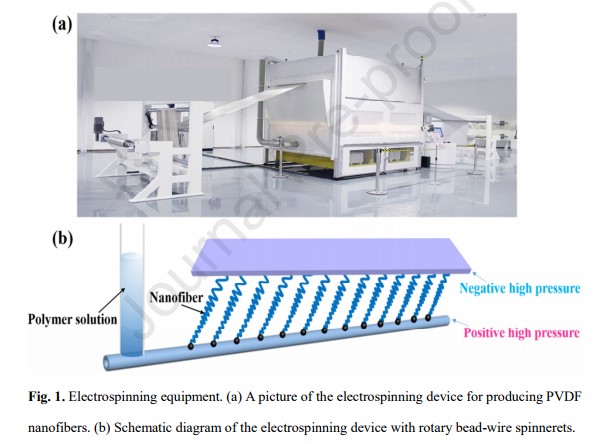© Copyright 2020 Foshan Membrane Technology Co., Ltd. All rights reserved. Sitemap
Filter materials are widely used in the capture of fine particulate matter (PM), however, there are some problems such as low filtration efficiency, difficult cleaning and low air flow still need to be solved eagerly. In this work, a high-performance PM2.5 capture as well as high productivity (1000 m(2)/day) was fabricated by introducing an ultra-thin polyvinylidene fluoride (PVDF) nanofibrous layer on the filter materials via electrospinning technology with rotary bead-wire spinnerets. The electrospun PVDF nanofibers exhibit a strong ability to intercept and attract PM, thus, the filtering efficiency of the filter material for PM2.5 improved significantly (69.958%-98.161%). The composite filter has a higher air flow (278.4 mm/s) and lower pressure drop (30 Pa). Furthermore, long-term filtration and ventilation rate experiments show that the composite filter has stable high filtration efficiency (98.137%-96.36%) and ventilation rate. Electrospun PVDF fibers also have a certain degree of hydrophobicity, which could increase the long lifetime of composite filter effectively. This high-performance composite nanofibrous membrane would be a promising filter for large-scale PM2.5 capture production and personal health protection.
过滤材料被广泛用于捕集细颗粒物(PM),但是,仍然存在一些问题,例如过滤效率低,清洁困难和空气流量低。在这项工作中,通过静电纺丝技术和旋转技术在过滤材料上引入了超薄的聚偏二氟乙烯(PVDF)纳米纤维层,从而实现了高性能的PM2.5捕获以及高生产率(1000 m(2)/天)珠线喷丝头。电纺PVDF纳米纤维具有很强的截留和吸引PM的能力,因此,过滤材料对PM2.5的过滤效率显着提高(69.958%-98.161%)。复合过滤器具有较高的空气流量(278.4 mm / s)和较低的压降(30 Pa)。此外,长期的过滤和通风率实验表明,该复合过滤器具有稳定的高过滤效率(98.137%-96.36%)和通风率。电纺PVDF纤维还具有一定程度的疏水性,可以有效延长复合滤芯的长寿命。这种高性能的复合纳米纤维膜将是用于大规模PM2.5捕集生产和个人健康保护的有开发价值的过滤器。

Published: 2020
Journal :COMPOSITES COMMUNICATIONS
Impact Factor:4.915
Paper link: https://www.sciencedirect.com/science/article/abs/pii/S2452213920302618